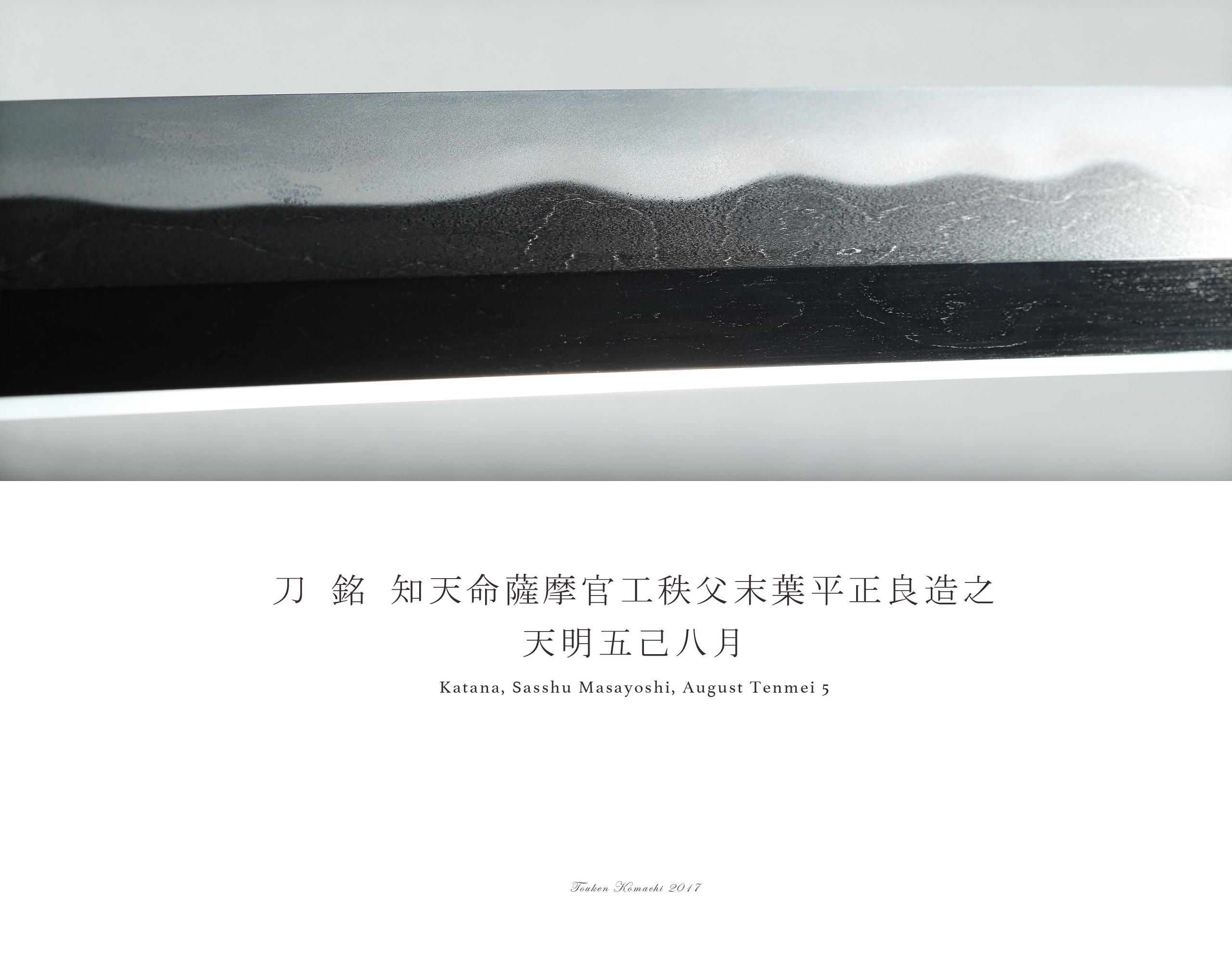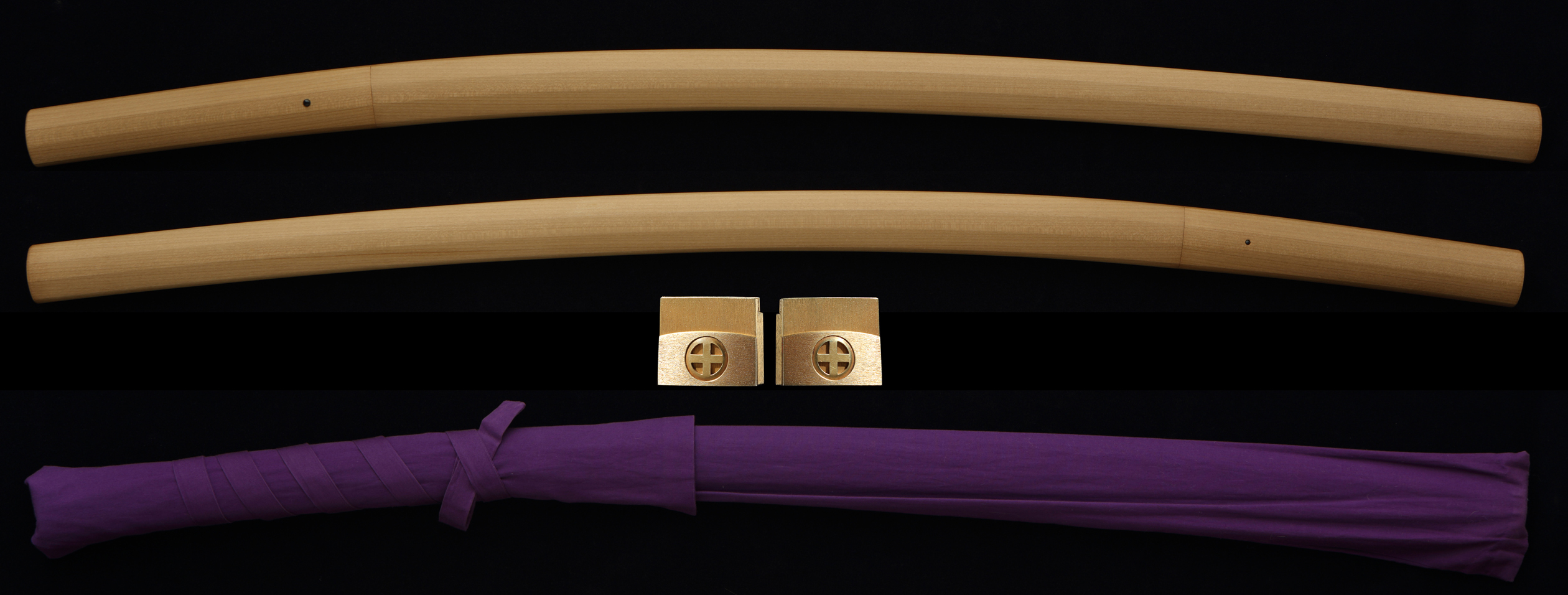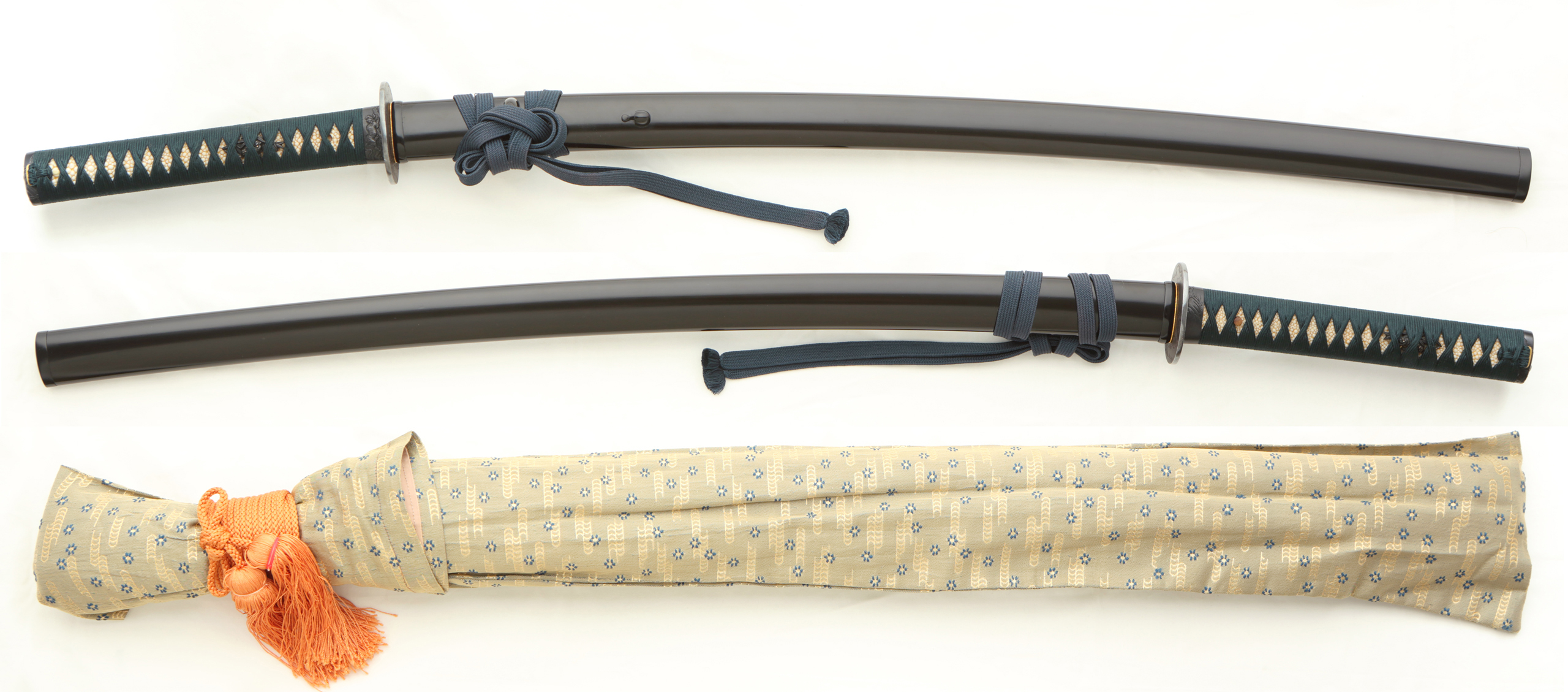[ Feature ]
Form : Shinogi-zukuri. Iori-mune. Mihaba is wide. Kasane is ordinal. There is relatively more differences between moto-haba and saki-haba. Chû-kissaki extended form.
Nakago : Ubu. Yasurimes are katte-agari. Saki is iri-yama-gata. One hole.
Jigane : Itame-hada, something like masame or flown patterns and mokume mixed. Rich and strong jinie attached. Kawari-gane similar to chikei mixed.
Hamon : Ô-gunomes-midare, togari-bas mixed. Deep nioi appeared. Nioi-kuchi is distinctive. Nie attached well. Aranie mixed. Kin-sujis, ara-sujis and sunagashi appeared. Along yakigashira, yubashiri appeared.
Boushi : It runs with small midare-komi. Then, its top shows more or less sugu shape. Saki runs in haki-kake.
Masayoshi was born in Kyôhô"享保" 18(ca. 1734). He called himself Jiemon. He was a chid of second generation IJICHI Masayoshi. He succeeded third generation (Masayoshi). His first signature "初銘" was Masayoshi "正良". He was appointed as an official swordsmith of Satsuma clan. In Kansei "寛政" 1, when he was made Hôki-no-kami, he changed his signature Masayuki "正幸". He published his book about swords creation. He was also famous as swords creationg teacher. He represented Satsuma swords in first half of Shin-shin-tô era. He deceased 86 years old in Bunsei "文政" 1.
黒蝋色塗鞘薩摩打刀拵 : 竹虎図鐔(無銘 知識 / 鉄磨地 肉合彫 金象嵌 小透 銀布目象嵌耳)、竹虎図目貫(赤銅地 容彫 金色絵)、水飲虎図縁頭(赤銅石目地 高彫 毛彫)、正絹御納戸色糸諸撮巻柄
Kuro-ro-iro nuri-zaya Satsuma uchigatana-koshirae : bamboo and tiger (také-tora) (no signature (Chishiki)) / iron polished, shishi-ai bori, gold inlay, ko-sukashi, silver nunome inlay edge mimi ), bamboo and tiger (také-tora) menuki (red copper shakudô, katach-bori, gold iroe), water drinking tiger fuchigashira (red copper shakudô, ishime-ji, taka-bori, ke-bori) , silk o-nando-iro moro-tsumami-maki zuka
Referenced materials : Japanese sword course Vol. 6 Shinban Nihontô kô-za dai 6 kan "新版 日本刀講座 第六巻" audited by HONMA Kunzan, SATÔ Kanzan, Yûzankaku publishing, Heisei 9(1998) ; 51th important swords designation directory, dai 51 kai jyû-yô tôken zufu "第五十一回重要刀剣図譜", NBTHK, Heisei 17(2005)
[ Highlight ]
The blade has a broad and imposing shape with a brilliant nie jigane base and a brilliantly colored alternating pattern of ara-nie and kin-sen.This is a monumental work by Masayoshi, who was fifty-three years old in the fifth year of the Temmei era. The phrase "know your destiny" can be found in the works of the 5th and 6th year of Tenmei, and it can be assumed that he was in his fifties during the "Tenmei" period and knew his "destiny" at the age of fifty, based on the phrase "fifty then know your destiny" in the "Second Treatise of Isei" in the "Analects of Confucius. The use of "Taira" to accompany the signature is from the Tenmei era and is noteworthy because there are examples of the Fujiwara family name being cut off on the works of the fathers. The inscription "Satsuma Kanko" was added in the third or fourth year of the Temmei era. The additional signature "Chichibu Matsuyo" means that she is a descendant of Shigetada Chichibu Shoji, or Jiro Hatakeyama Shigetada, who was known as a brave general in the early Kamakura period (1185-1333).This sword is an indispensable historical document in Masayoshi's research and is included in "Nihon-to Koza 4 Shintou (Japanese Sword Course 4: Appraisal Edition, Shintou)" (Kozu Hakaru Yuzankaku, 1937), p. 66, and "Touei Tekiroku Kozu Haku Oshigata Zen" (Nihon Bijutsu Kenpo Shuhei Shokai, Tatsushunju Shimbunsha, 1984), p. 1094.
[ Conditions ] Highest rank polishment has been done. Koshirae was made recently also. Uchigatana koshirae with regular features which is using Satsuma fittings made and coordinated by current first-class craftmen.







